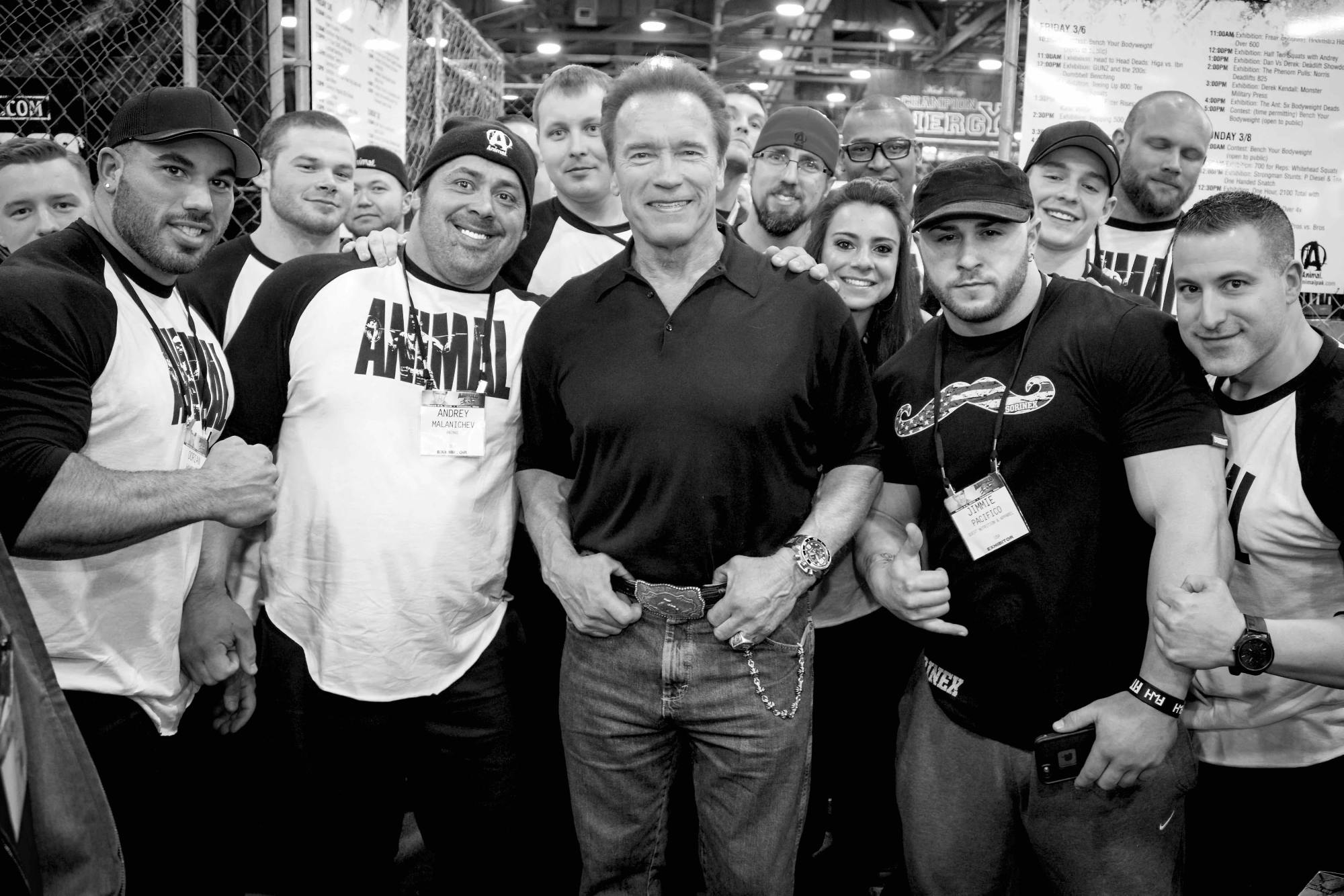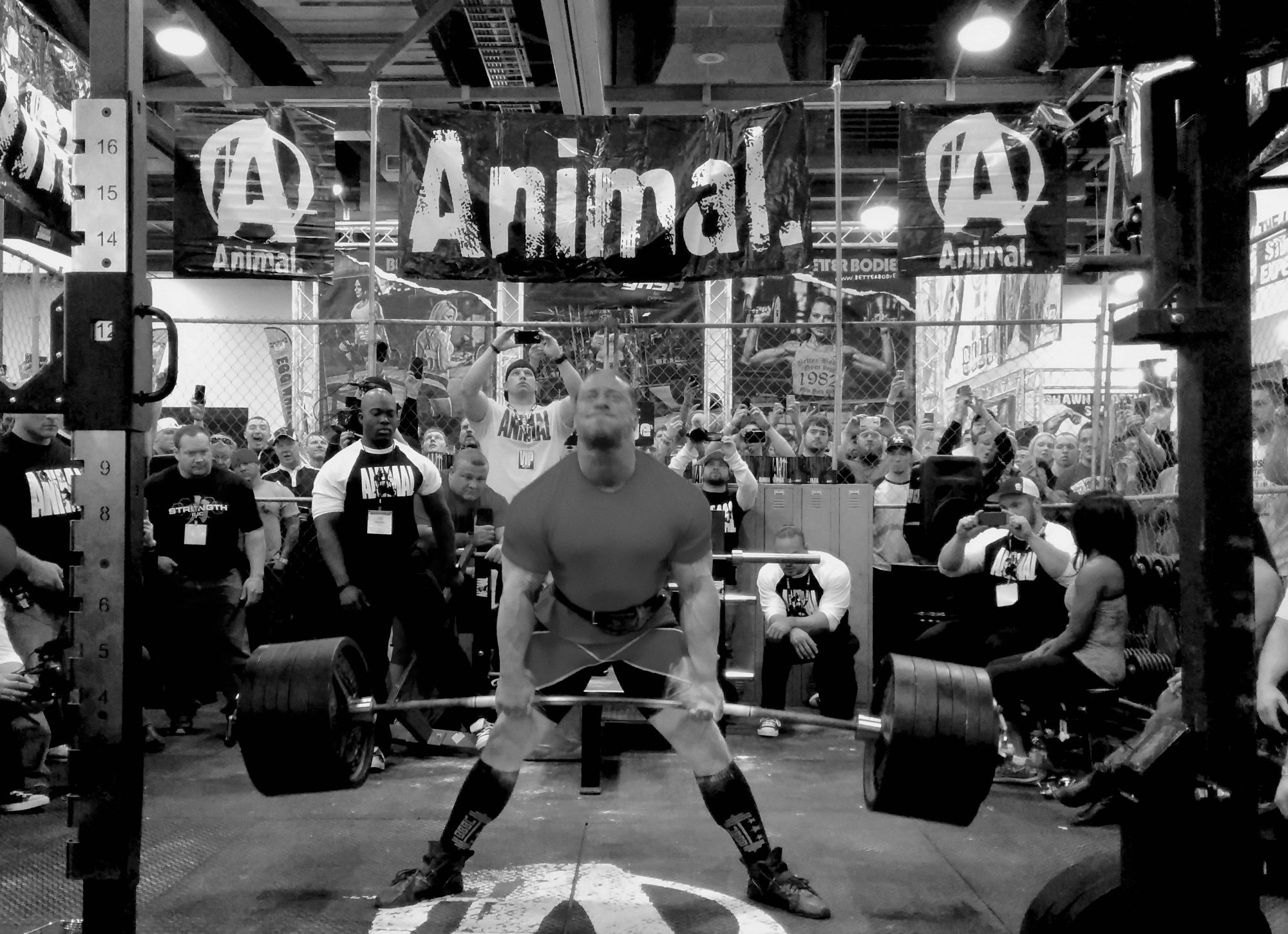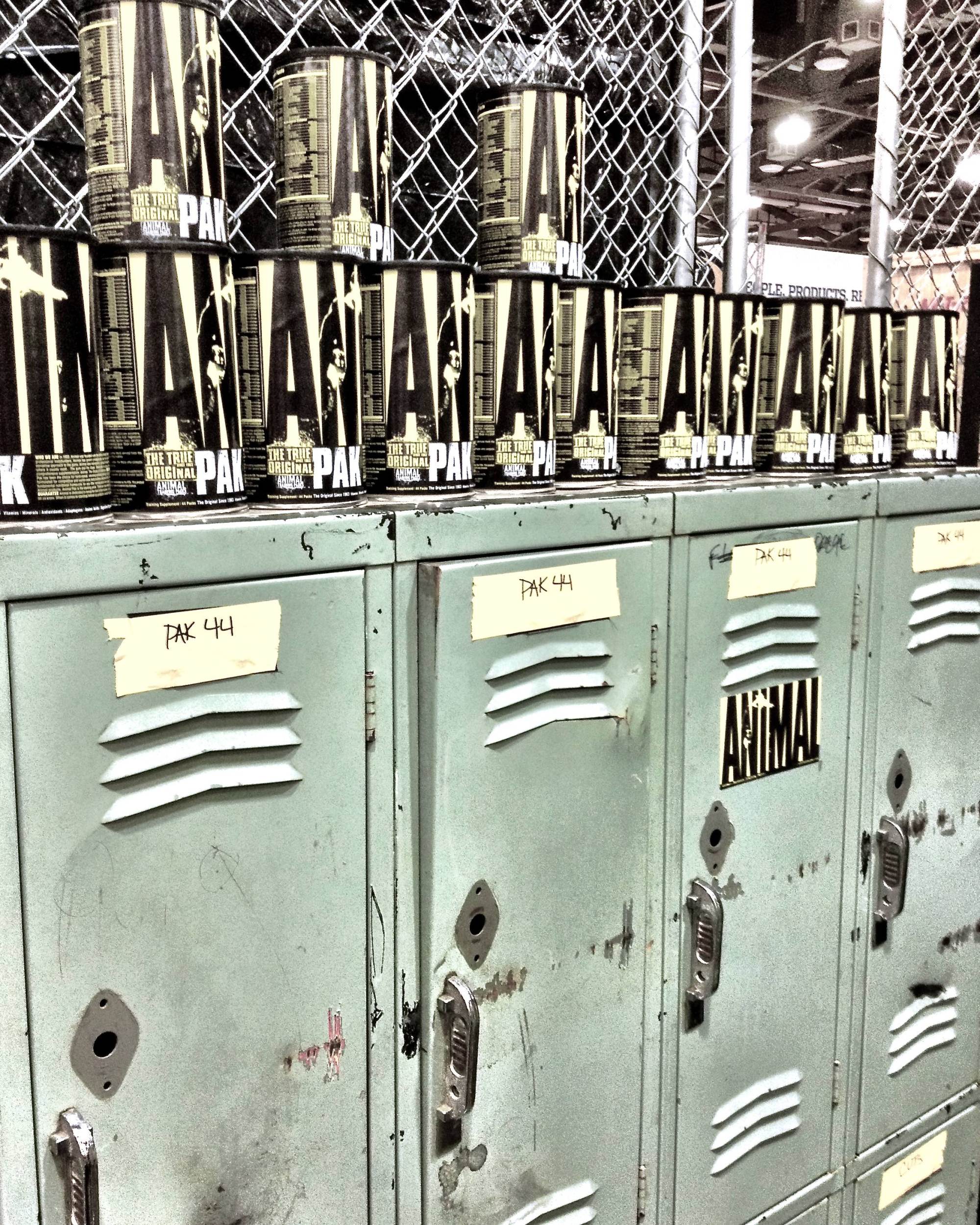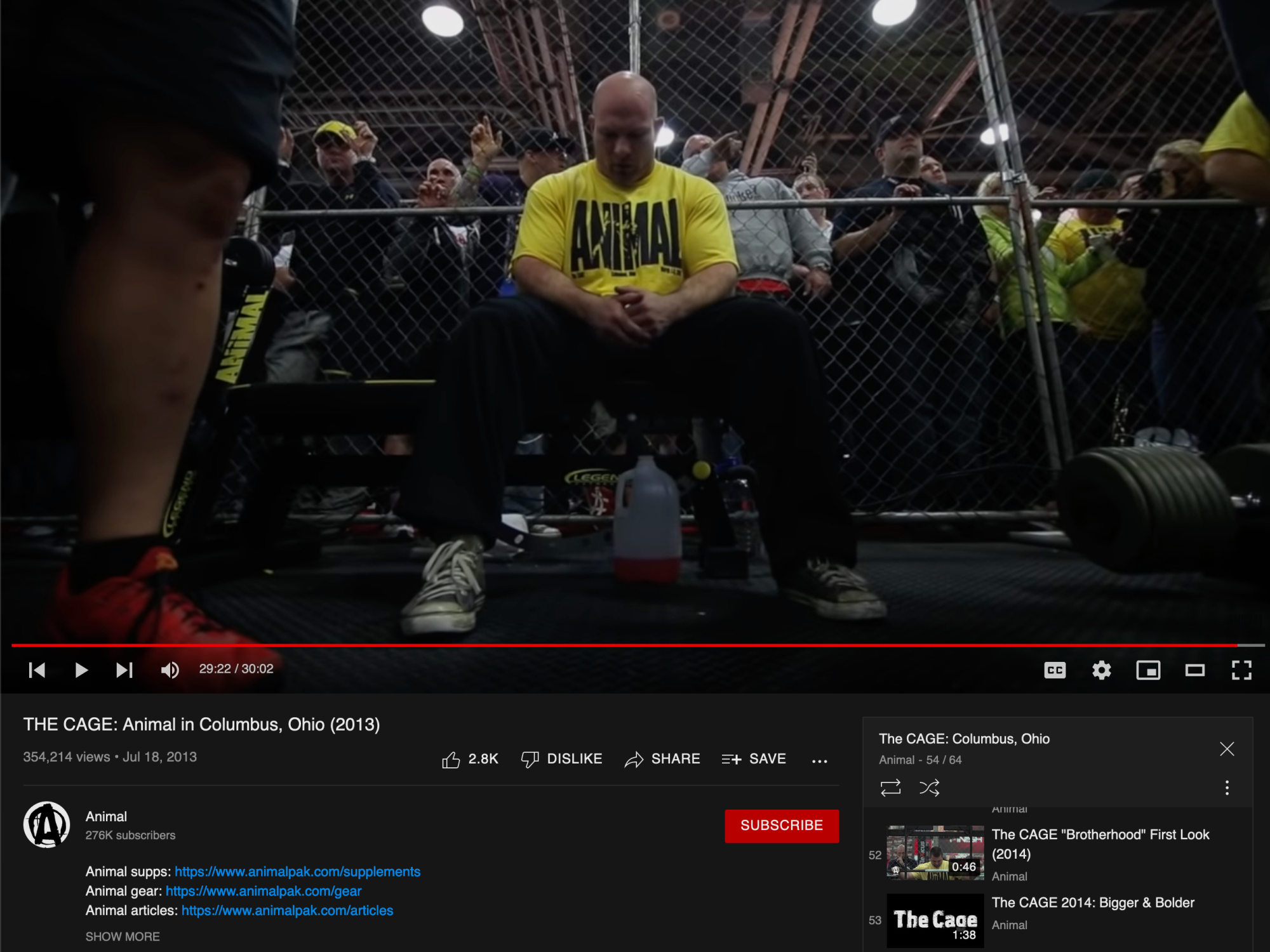We all want to be unique and each of us expresses that desire in different ways. Few would openly admit they have a herd mentality. Marketing tells us that brands should aspire to come alive–resemble a person. If this is true, then we can take what we know about our interactions with one another, and apply the same ideas to brands. Positioning, differentiation, and expectations (delivered as a value proposition) are concepts we can easily apply to the world we live in.
The Cage is just Animal's expo booth. Yet it wasn't just a booth. The Cage was a place for everyone to come together in one place every year. We thought of even like a big reunion and as such, we treated everyone like family. Over the course of 3 days, we featured lifting exhibitions froom some of the strongest people in the world, bar none. We offered seminars on training, eating, diet and everything in between which were run by pro athletes and healthcare professionals. In addition to being a spectacle, The Cage was inclusive and participatory–fans could enter and compete in strength events, like benching your bodyweight for reps. Referred to as the "Super Bowl of Lifting" anyone who was interested in strength stopped by to say hello.

The Arnold Sports Festival was a huge expo, attracting well over 100,000 people every year. Of course, the show was named after some guy named Arnold. You can see him mugging it up with some of our employees and athletes. It was the biggest party of the year for our fans–and for everyone in the Marketing Department. I couldn't take the entire team every year, leaving many were disappointed–but they knew they'd be going the following year.
The Cage is difficult to put into words, but we tried our best to capture the vibe on video. The 30-minute feature video below gives you a sense of what it was all about. From a marketing perspective, it was a great way to reach those consumers who weren't able to visit us in Columbus, Ohio. I always posed a simple question to my marketing team when they created any kind of content for our fans–"Will it make them want to go to the gym?" If the answer was yes, then I used that as a litmus test. Many have said that The Cage and this video inspired them. Check it out–click on the image below to watch.
The "Super Bowl of Lifting"
Click on the image above to watch Animal's 30-minute feature video of The Cage.
I subscribe to the notion that creativity flows from limitations.
Repeatable processes and frameworks are a good way for any marketer to
continually produce good ideas. As with ad campaigns, you follow set
steps. Here, I created another canvas that looked at the competition,
and mapped that competition out. From there, I could see where
opportunities existed that we could leverage. Essentially speaking, this
is another way to think of "when others turn right, turn left." So
where our competitors were selling to their
customers, we (employees and sponsored athletes) were on the ground, in
our booth space,
rubbing shoulders with our fans–intimate, personal, and as equals. More
than anything else, this event really connected our fans with the brand
and brought our brand to life in a visceral, tangible way. Ironically,
though the booth lacked a clear commercial or marketing element, we
easily sold a six-figure amount of Animal branded t-shirts and
accessories at the expo
every year due to the strength of the brand as a lifestyle brand. When I
first pivoted to this approach, many in the company were skeptical. One
senior sales rep told me, "People won't buy a t-shirt for $10 or $15
dollars when they expect one for free." The following year, when I met
that same rep in The Cage, he looked at the crowds, and admitted he was
wrong.

As usual, I had a buit-in constraint to work around–in the early years of
brand-building, the marketing budget was very small (around 3%). In real
terms, this meant that if our competitors threw out 2,000 t-shirts over
the course of 3-day weekend, we could only afford to give out 500. If
we distributed 2,000 product catalogs, some of our competitors handed
out 10,000 catalogs plus their own company magazines. After going to a
few shows, I asked myself a question–"Why are we playing a game in which
the rules have been established by our competitors?" When thought of
that way, it didn't make sense. When using the public restrooms, I'd
always see printed materials from flyers to catalogs as well as product
samples stuffed into the waste bins. By thinking about the important why question again, and answering it, I was able to formulate a plan and answer the what.
• • •
MORE | I rely on the use mental shortcuts or what some call heuristics. This is a tool allows me make good decisions, faster. When I think of "radical"
marketing, I often think of a simple idea that is one of my shortcuts:
"When others turn right, turn left." What does that mean? To be clear,
this principle doesn't advocate that marketers always turn left–that
would be irresponsible. Instead, armed with strategic thinking and
planning, only turn left when doing so creates differentiation or
competitive advantage. When talking about print advertising earlier, I stressed the
importance of selling something greater than just a product. Generally
speaking, I wanted to sell a certain lifestyle. I wanted consumers to
reach higher, for loftier needs beyond the purely physiological as
Abraham Maslow points out (Hierachy of Needs). The ad campaigns are also
a good example of this heuristic as well–when our competitors went
color, we went B/W.
Perhaps another, better example of this
principle can be seen in how we brought our expo booth to life. As
mentioned earlier, being a good marketer often means nothing more than
being a keen observer and asking the right questions. After I started
working full time as the Marketing Director, I began attending the
Arnold Sports Festival in Columbus (OH), the largest consumer expo of
its kind, and one that catered to nutrition companies like ours. As with
print ads in magazines, the expo hall there was enormous–you'll find
1,000 or so exhibitors if you attend the show. Everyone is promoting
their products, and the question again becomes one of managing the
signal-to-noise ratio.
If
we couldn't compete playing by their rules, we could create our own
game. If consumers discarded swag and catalogs by the tens of thousands
over the course of the show, then an opportunity arose–what
would
they value? As mentioned before, I believe that emotions really create
brand stickiness. Long story short, instead of a booth, I imagined what
would happen if we gave fans an experience, and delivered palpable
memories. From this, The Cage was born.
[ Watch The Video: The Cage ]



